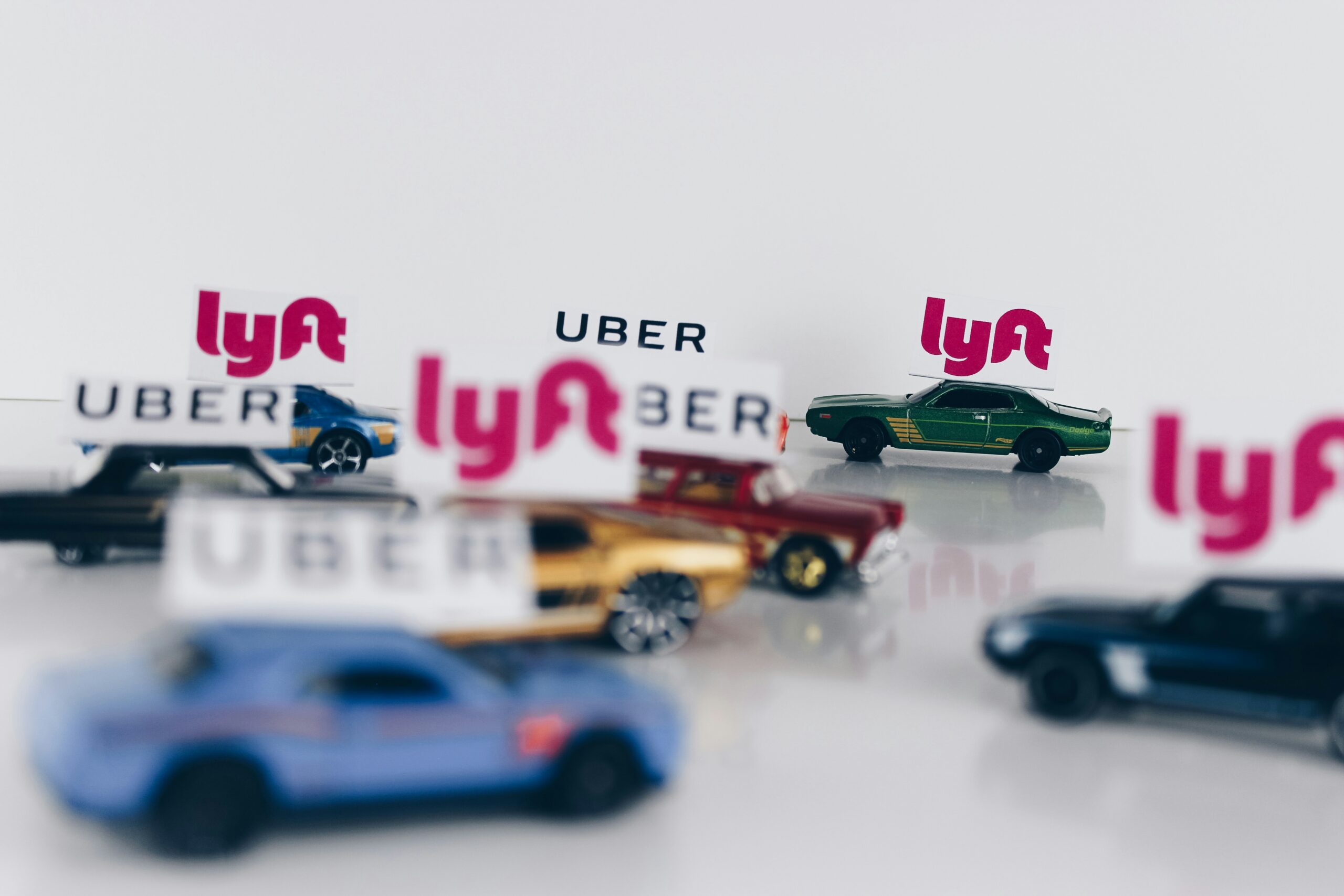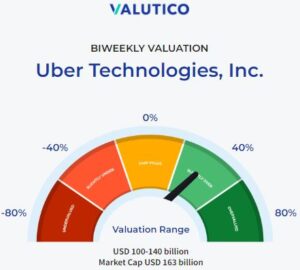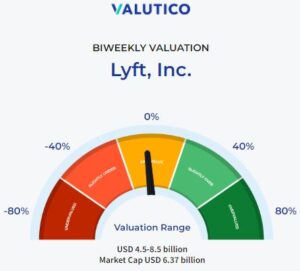Uber Technologies, Inc. & Lyft, Inc.
Weekly Valuation – Valutico | February 27, 2024
Links to the valuation: Uber, Lyft

Shifting gears to profit
Uber has marked a significant milestone by reporting its first-ever operating profit in the second quarter of 2023, setting a new pace in the race to profitability within the ride-sharing domain. Lyft, not far behind, projects to hit its operational break-even point in 2024. Given this positive financial outlook for both ride-sharing enterprises, we present a comparative analysis of Uber and Lyft, including their operating models and financial performance.
Decoding the operating models
In the sprawling realm of ride-hailing, Uber and Lyft present intriguing contrasts, not just in scale but in their strategic approaches:
Market focus and expansion
Uber boasts a global footprint, serving countless cities across various continents, reflecting its ambition for worldwide dominance. In contrast, Lyft chooses a more focused path, primarily serving the United States alongside select Canadian locales, thus catering intimately to North American preferences.
Service diversification
Uber dives into an abundance of services including Uber Eats for the gastronomy adventurers, Uber Freight shaking the logistics sector, and pioneering in the autonomous vehicle frontier. Lyft stays true to its core, championing personal and shared rides, while also venturing into micro-mobility with bikes and scooters.
Technology and innovation
Uber pioneers with substantial investments in autonomous driving and artificial intelligence, envisioning a future of mobility. Meanwhile, Lyft strategically embraces technology through pivotal partnerships, notably with Waymo, to navigate the autonomous vehicle landscape.
Financial analysis
Both giants are racing ahead post-pandemic, with Uber leading in growth metrics. Uber’s financial horizon brightens with EBITDA breakeven, anticipating margins of 15-20%. In contrast, Lyft, on its path to profitability, eyes positive EBITDA margins in the higher single digits soon. Continuous investment is key for growth, yet Lyft’s trajectory suggests a higher investment need relative to its sales.
Market share dynamics
Uber has maintained its lead in the U.S. ride-sharing market, with its share increasing from 62% in early 2020 to 74% more recently. Meanwhile, Lyft has consistently held about 30% of the market since mid-2022. Both companies have adapted to changing consumer behaviors and inflation, with Uber expanding its services beyond ridesharing into meal delivery and partnerships for autonomous driving, while Lyft ventures into food delivery and improves rideshare services.
Valutico’s view
As per Valutico’s analysis, Uber is slightly overvalued while Lyft is fairly valued. For Uber, DCF valuation is at USD 137 billion, with Trading Comparables suggesting a range of USD 80-130 billion. For Lyft, DCF valuation is at USD 4.5 billion with Trading Comparables suggesting a range of USD 5.4 to 10 billion.


Conclusion
The journey towards profitability for Uber and Lyft unfolds against a backdrop of diversified services, technological advancements, and strategic market positioning. With Uber’s expansive revenue streams and global presence contrasted against Lyft’s focused approach, both companies navigate through the intricacies of profitability, regulatory landscapes, and technological evolution. As they advance towards improved financial performance, the dynamics within the ride-hailing and broader mobility industry are set for an intriguing future.
Disclaimer
This article is for informational purposes only and does not constitute investment advice. None of the information contained herein constitutes a solicitation, offer or recommendation to sell or buy any financial instrument.



